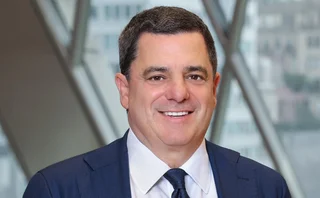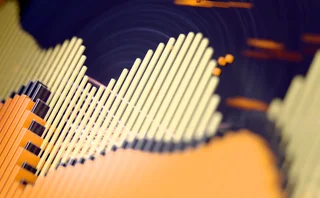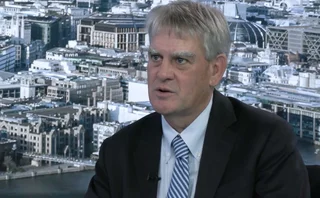
Credit derivatives house of the year: BNP Paribas
Risk Awards 2022: Relative value trades propel French dealer into US top tier for index and single names

In August, a US-based hedge fund saw an opportunity to trade the credit risk differential between European and US financial institutions. The fund gave the order to a single bank, which worked the $1 billion transaction over a three-week period, offsetting risk with hedging needs from various bank credit valuation adjustment desks.
That bank was BNP Paribas, and it’s exactly the type of transaction the French dealer hopes will become the norm as it aspires to become the top European player in the US.
After a severe bout of volatility in 2020, triggered by the spreading Covid-19 pandemic, credit markets settled down in 2021. Volatility on major US and European indices remained relatively unchanged throughout the year. Trading shifted from index credit default swaps (CDS), which had been the focus in the early stages of the pandemic, to a resurgence in single-name swaps trading.
The change meant credit desks had to do more than just provide liquidity. They needed to be proactive with clients, devising unique trade ideas to recapture some of the business that had sat out the most volatile periods.
“Last year, we had to be much closer to clients and able to source both sides of the risk as the market conditions changed dramatically from 2020,” says Nick Stratopoulos, managing director in credit sales for BNP Paribas in New York.
Relative value trades, such as the US-based hedge fund’s move to sell protection on US institutions and buy protection on the European subordinated financials index, became a defining feature of BNP Paribas’s year. The bank boasted a 60% annual increase in relative value trades stemming from its research ideas.
The bank leaned on its research team to help clients find opportunities. The pandemic’s ongoing impact on markets, including home working trends, economic reopening and the re-emergence of M&A activity, all offered ample relative value opportunities. Research on these topics proved popular with clients.
“Our relative value strategy trades have attracted a following with a growing group of clients that execute sometimes up to 100% of those trades,” says Viktor Hjort, global head of credit strategy and desk analysts at BNP Paribas.
Hjort cites opportunities in the summer when the difference between a bond’s credit spread and the spread of the comparable CDS – known as the bond-CDS basis – offered attractive returns for clients holding both the CDS and the cash bond.
In Europe, the bank estimates it traded 14% of single-name CDS volume in 2021. According to Bloomberg electronic trading figures, the French dealer was responsible for 13.5% of Europe iTraxx index volume in 2021.
Although not a unique arrangement to BNP Paribas, the bank attributes its strong year in part to the integration of front-office functions, where traders increasingly take on sales roles and researchers share a similar mindset.
Our relative value strategy trades have attracted a following with a growing group of clients that execute sometimes up to 100% of those trades
Viktor Hjort, BNP Paribas
“The traditional disciplines of sales, trading and research have merged more into one than they ever have before, and that’s particularly the case for a year with low volatility,” says Peter Rafferty, BNP Paribas’s head of credit flow trading and sales for Europe, the Middle East and Africa. “The commercial nature of both sales traders and research is much more significant than it ever was.”
A string of new hires in Europe helped bolster the bank’s position in its home region. On the cash side, Nabil Benjelloun joined in January 2021 from HSBC to serve as head of investment grade credit trading. Alun Sheppard came on board in July, leaving JP Morgan to take a position as head of high-yield credit and loans trading and trade cash and CDS at the French bank.
More recently in the US, the bank brought in Patrick Vickers from Credit Suisse as a senior CDS trader focusing on distressed trading. He reports to BNP Paribas’s head of US single-name CDS trading Matt Mandell. Karan Puri joined from Barclays at the start of the year to strengthen bank’s index trading.
Moving up
In the US, the bank moved a spot higher to second on Bloomberg’s electronic trading rankings for index trades. It also posted an estimated 15% market share in US single names.
“We’ve punched far above our weight in terms of secondary market share and business performance,” says Stratopoulos.
The credit options market is one example of the bank’s success. Market share figures are hard to come by, though BNP Paribas says its US index options trading totalled €634 billion ($725 billion) notional in 2021. The figure is down from 2020 when volatility spurred an increase in market activity, but around a third higher than the $538 billion of index options the bank traded in the US in 2019.
Stratopoulos says there were various situations throughout the year where asset managers sold call options on their high-yield equity portfolios, which BNP Paribas matched off with hedge fund clients looking for leveraged exposure.
“Two years ago, we may not have been able to source both sides of those risks in the US,” says Stratopoulos. “Now with the development of our high-yield business, and increased penetration of the client base, we found more trades to bolster what was already a top three business and take it all the way to the top.”
We’ve punched far above our weight in terms of secondary market share and business performance
Nick Stratopoulos, BNP Paribas
In its options business, a growing presence with larger institutional clients trading non-linear credit products mirrors the trajectory of the credit options market more generally.
“That business grew from a small group of hedge funds, maybe four or five, as more macro funds and specific credit funds took part. But that space now is dominated by real money,” says Rafferty.
Instead of trading in and out of positions, so-called real money investors such as pension funds and insurers are more likely to hold positions over the long term. They also trade in large sizes, making these clients especially valuable to the desk. As those market participants have grown in sophistication and expanded their credit books, BNP Paribas has seen them increasingly make up more of the credit desk’s business.
The broader credit derivatives market has seen a similar transition, where the historical bias towards hedge funds has given way to a more balanced array of market participants.
“A hedge fund will have a more tactical approach usually and, at the opposite extreme, the life insurance and pension fund communities are managing against their long-term liabilities. But, in terms of the instruments used to achieve those objectives, they are increasingly similar,” says Hjort.
CSO dominance
On the structured side, the bank saw a similar change in market dynamics and client priorities. With spreads tightening and dislocations becoming less obvious than in the early months of the pandemic, clients had to look elsewhere for returns. Insurance companies, for instance, turned to repackaged notes, which combine bonds and derivatives.
“2020 was a lot about seizing opportunities in the markets and trying to take advantage of the dislocations. Last year, the fact that volatility and spreads were low meant people needed to resume thinking more about bespoke, more structured types of deals to beat investment targets or to hedge,” says Paul-Louis Laferrere, a credit structurer in London.
BNP Paribas also saw increased activity from smaller institutional clients interested in equity tranches of collateralised synthetic obligations (CSOs), which break portfolios of single-name CDS into tranches based on risk, due to their attractive risk and reward profile.
The bank estimates it traded 40% of global CSO volumes in the past year, including primary issuance and what turned out to be an active year for secondary market trading.
“A decent portion of our volumes were on the secondary market, as well providing liquidity on bespoke tranches initially traded with other dealers,” says Laferrere.
The bank is also working to make credit derivatives accessible to clients without the necessary legal agreements or credit lines in place. Through managed credit derivatives certificates, the bank offers tradeable securities for smaller clients to express credit views, with margin requirements that negate the credit risk to the bank.
“The idea given our ambitions is that this becomes more systematically integrated into our offering to clients. We’re already seeing the results in terms of client interactions, so we expect this to grow,” says Laferrere.
Only users who have a paid subscription or are part of a corporate subscription are able to print or copy content.
To access these options, along with all other subscription benefits, please contact info@risk.net or view our subscription options here: http://subscriptions.risk.net/subscribe
You are currently unable to print this content. Please contact info@risk.net to find out more.
You are currently unable to copy this content. Please contact info@risk.net to find out more.
Copyright Infopro Digital Limited. All rights reserved.
As outlined in our terms and conditions, https://www.infopro-digital.com/terms-and-conditions/subscriptions/ (point 2.4), printing is limited to a single copy.
If you would like to purchase additional rights please email info@risk.net
Copyright Infopro Digital Limited. All rights reserved.
You may share this content using our article tools. As outlined in our terms and conditions, https://www.infopro-digital.com/terms-and-conditions/subscriptions/ (clause 2.4), an Authorised User may only make one copy of the materials for their own personal use. You must also comply with the restrictions in clause 2.5.
If you would like to purchase additional rights please email info@risk.net
More on Awards
Collateral management and optimisation product of the year: CloudMargin
Delivering the modern blueprint for enterprise collateral resilience
Flow market-maker of the year: Citadel Securities
Risk Awards 2026: No financing; no long-dated swaps? “No distractions,” says Esposito
Pricing and analytics: fixed income – Quantifi
Quantifi delivers high-performance, transparent and adaptable pricing and risk analytics for fixed income and credit markets
Derivatives house of the year: Citi
Risk Awards 2026: Rev up, RWAs down, as US bank gets back on track (with added XiNG and XiP)
Technology vendor of the year: SS&C Algorithmics
Risk Awards 2026: From cloud, to chips, to maths tricks – vendor getting more out of existing tech
SS&C Algorithmics: winner’s interview with Curt Burmeister
SS&C Algorithmics wins three categories in this year’s Markets Technology Awards in addition to Technology vendor of the year at the Risk Awards
Best vendor for system support and implementation: Murex
Murex wins Best vendor for system support and implementation at the Markets Technology Awards 2026
Pricing and analytics: cross-asset and structured – Murex
Murex wins Pricing and analytics: cross-asset and structured at the Markets Technology Awards 2026 thanks to its MX.3 platform







